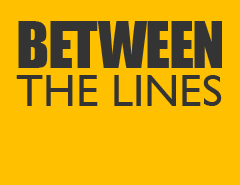 Impatience
Impatience
Why are we so impatient when it comes to trading? We set out in our trading plan exactly when, why and where we’re going to take trades. And yet in the ‘heat of battle’ we’ll close the trades too early, or we’ll enter too early, which can have the effect of seriously damaging our bottom line.
There is absolutely zero point in labouring over developing our trading plan if we’re then going to violate it at the earliest opportunity based on ‘hunches’. We’re either ruthless, emotionless traders, who will execute our trading plan to the letter, or we’re impetuous ‘guessers’ and only one type will succeed in this, or any other trading market place. However, all that being said it is understandable how we can be seduced into ending trades prematurely, or entering a trade too early.
Typically, we’ll see the set up beginning to take shape on our chart/time frame, we’ll look for evidence of previous similar patterns and take a view that it’s nearly (but not quite) the perfect set up and we’ll enter early. Similarly we may be in a losing trade, we’ve set out our risk of perhaps 1% and we’ll be thinking that; “if we stop the trade now we might ‘save’ a few pips, our loss might be 0.80% as opposed to 1%”.
However, if we adopt these principles inevitably we’ll experience trades that may threaten to lose 0.80% to then turn in our favour. By all means we should aim to cut a losing trade as early as possibly, once it’s completely invalidated by our trading plan, but cutting losses early (outside of the trading plans parameters) simply leads to traders operating in a ‘no man’s land territory’ and we have trailing stops to ensure our losses are kept to a minimum and below our full risk.
The cure for impatience is to attempt to remain distant and emotionless from the market; it’s not you trading, it is in fact a system. Put distance between you and the decision making. New traders might then derive satisfaction from the fact that they’ve identified what actions to take and have stuck to them. Whilst none of us enjoy taking a loss, a loss derived through following the plan, thereafter the next trade resulting in significant points because we stuck to our trading plan, is not only satisfying but provides an extremely valuable lesson to us as traders.
Failure to stick to a method long enough
In other articles penned for this blog we’ve often discussed how long and over how many trades we should test out a new trading strategy before deciding that it it’s worth fully engaging with in the real market. Rather than pick an arbitrary number we can forensically suggest how many trades based on the normal random distribution of winners versus losers.
For example, if we’re risking 0.5% of our account balance per trade, and we’re a swing trader trading one security only, perhaps the EUR/USD, then we can quickly establish a rough trade count before deciding that the strategy has succeeded or failed based on the drawdown we decide is permissible.
If we’re risking 0.5% per trade and we decide that 7.5% is our acceptable drawdown level for the strategy, before we take the view that it’s invalid, then technically we’d need 15 losing trades in sequence before committing the strategy to the recycle bin. Now as we’ve also stressed in previous articles it’s perfectly reasonable to expect positive expectancy from a strategy which only delivers a 50:50 return. Therefore as a ‘line in the sand’ or a benchmarking metric, the worst we should be considering is 30 trades to evaluate our strategy performance – 15 winners and fifteen losers.
As a day trader this would be arguably one a day on a single security. On a swing/trading strategy this could be significantly longer, up to 3 months or longer if we average 3 days per winning or losing trade which would be far too long to test a strategy and 3 days doesn’t actually represent the length of time we’d normally be in a swing/trend trade.
Therefore, if we’re a swing trader, we could drastically cut the length of time that we analyse our strategy down to perhaps one month, or five trades, with our drawdown being reduced to 2.5% versus the original 7.5%. We can do this in the full knowledge that if we were to test a strategy over a month we’d have witnessed enough market conditions in order to test our strategy fully, or you could take it over two months with a maximum drawdown of 5%. So whether it’s a intraday/day trading strategy, or swing trading we’ve established a reasonable benchmark by which to judge our strategy over.
Greed
There can be no room for greed in trading, it should be eliminated at the same time that we commit our trading to a trading plan. Greed simply should never exist in a trading plan that has at its heart a complex structure to deliver positive expectancy. The only ‘good’ greed is that which encourages us to trade our plan to the letters nod maximize the pips or points available in the full knowledge that we cannot improve on the performance bar micro adjustments, we can only accept the reasonable level of returns that the market offers up. We have to accept that we’ll never get all the pips or points in a move, we’ll never accurately pick the tops and bottoms, what we can do is develop many methods to follow price.
Fear
Although greed and fear are often linked as issues were trading is concerned they are very separate negative concepts that effect our trading in completely different manners. Fear can manifest itself in many ways; fear of taking a trade, fear of losing, fear of not being able to make a career out of the FX industry and there’s many other fears which are entirely rational upon further investigation. So what are we afraid of, what’s our worse fear?
Let’s suggest it’s losing everything in your account. Now we’ve proved earlier how we can only risk a drawdown at the worst 7.5% over a reasonable series of trades, so that’s the fear dismissed. We can face up to all our fears and confront them in exactly the same way. For example, the fear of taking a trade. OK, so what’s the solution? Automation could be one, or complete trust in the trading plan we’ve developed leading to fear being eliminated. Or scaling our risk down to the point where our sweaty palms disappear when holding our computer mouse and we experience a sense of enjoyment as opposed to fear.
Lack of discipline
Why do we lack discipline in our trading when we instinctively know that it’s an essential cornerstone to our trading success? Once again the remedy should be straightforward as we should simply defer to our trading plan. One of the biggest plus factors with a plan is that in an ironic sense it takes away much of the effort we believe we need in order to enjoy success. We know that to experience success in other aspects of our life it takes discipline. If we’re to improve as a runner we’d need to practice, we’d need the discipline to train at certain times, watch our diet, follow our plan, trading is no different. We have to have the ambition; we have to structure our trading day, even as a swing trader, to be ready to take our high probability set ups when they occur.
We can only do this if we’ve developed a highly disciplined and respectful attitude to our career as a trader. We could ask ourselves; “do we have respect and self-respect for the serious business that is trading”? If the answer coming back is one of doubt then we quite simply need to up our game in order that respect is restored.
Adding to losers, adding to winners
We’ve also mentioned this aspect of our trading in previous articles, but it’s worth repeating. Unless you’re a very experienced trader, who has the confidence to realise how you can pull money out of the markets through hedging and or holding multiple positions on correlated securities, then you need to keep it (your trading) very simple. Simply trade one security at a time.
Choose one of the most liquid securities, for example EUR/USD or the DJIA index and the chances of false breakouts will be reduced substantially. Only judge your trade by the time frame you’re in. Whilst it’s obvious to believe that if our set up occurs on the 1hour time frame, the 2hour, the 4hour and the daily it’ll have some momentum, it’s not always that straightforward.





